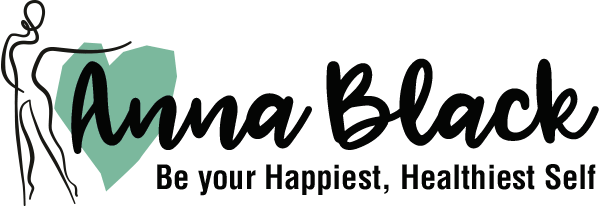Our hormones start to decline, at different speeds in our mid 30s. As our bodies have been so used to getting a certain amount of oestrogen, progesterone and testosterone, this change can result in chaos. The fact that the ratio between these sex hormones can change from one day to the next at this time adds to this chaos. Lack of information on how many processes in the body they are involved in can also lead to panic when certain strange things start to happen.
Oestrogen, progesterone and testosterone are all involved in so many different processes in the body, from working with insulin to manage blood sugar levels to supporting our brains, that once they start to decline and the balance between them changes it can throw a lot of processes into a panic. Our bodies are amazing though, they will find a new normal eventually, but this time of transition, which can last 10years+ can be pretty challenging. Add on to this life with all its stresses, it can be a tough time for many. But there is a lot we can do to help to soften the ups and downs of that rollercoaster.
Symptoms – it’s not just a hot flush
Or it’s not even a hot flush. Actually hot flushes are only one of 34 symptoms included on the NHS website. UTIs, joint pains, vaginal dryness are some of the lesser known ones. Ultimately you can experience all, or hardly any. But regardless of the number of symptoms you experience your body is changing, and updating how you live will help you take control, build resilience, and feel better, even happier. And surely we all want that!
What to do?
1) See the GP It goes without saying that seeing a GP if you have anything that you’re worried about is essential. They will not test you for perimenopause (unless you have symptoms and are younger than 40) as one off tests are pretty unreliable due to fluctuating hormones but instead will look at your periods, symptoms and how you’re generally feeling. However, they possibly will test you for things such as iron deficiency, and thyroid issues, changes which can happen alongside perimenopause but may not be linked at all.
Following the recommendations from last week’s cross party House of Commons report, if you are 45+ GPs also now should discuss perimenopause management and the benefits and risks of HRT with you.
HRT has had mixed feedback. It is a life changer for some, but not for all & it can take a while to work out the dose/combination that works for you. It can also carry some small risks. However for many women the benefits with anxiety, sleep loss, outweigh the risks. A recent study with with Zoe Ltd has also shown it can help slow down the increase of belly fat (but not reverse it), and also help with glucose management. Do bear in mind though that exercise, lifestyle and nutrition can also really help with these issues and many other experienced during menopause and should be included regardless of whether you take HRT or not.
HRT is always an individual decision, with everyone’s background and health feeding into the decision whether to go down this route and a discussion with your GP is a non negotiable.
2) Forget about calories in/calories out
Whilst eating a lot and not moving will of course have an effect on body composition, it’s tricky to get rid of belly fat or change body composition by trying to balance calories in and out during these years. Our bodies are affected by so much more now, they use and store calories differently at different times and are affected by many variables such as stress, a change in hormonal ratios, lean muscle mass, sleep, and even the time of year. So trying to accurately measure both how much energy you’re using and eating is really difficult and can ultimately stress our bodies out which has directly the opposite effect of what we’re aiming for, such as a breakdown of lean muscle mass and a storing of fat around our middles.
Instead we need to think about how we live to support our “40s and Beyond” bodies is so much more powerful, and effective. Thinking about including colours, plants and exercise for a varied gut microbiome, more lean protein sources for bones and muscles, and omega 3s for the brain.
And also… managing our blood sugar.
When we eat, our body uses insulin to get sugar/glucose out of the blood and into our muscles for energy.
As we go through menopause and our oestrogen and progesterone decline we become more insulin resistant; i.e. we need more insulin to do the same job. We also experience a higher sugar spike from the same foods than pre menopause. When our blood sugar spikes, a whoosh of insulin is released to get that sugar out of our blood, this results in a sudden drop in blood sugar, and a craving for a sugary snack. If we do get that snack then the cycle repeats, and the constant rollercoaster of blood sugar stresses our bodies. But If we don’t get that sugary snack our bodies still stress as they’re lacking energy. This stress response can result in us breaking down lean muscle to get more sugar/energy into our blood (to help us run away) and reduces our insulin sensitivity still further, therefore increasing our insulin resistance. If we don’t use that energy, which we often won’t, the excess is stored as belly fat, and increases inflammation within our bodies. So, we want to think about how to flatten these spikes!
What to Do? Ideally we want a steady drip of insulin not a sudden whoosh. And it’s not just the obvious sugary drinks and foods that cause these spikes. Refined carbohydrates such as bread, cereals & pasta, can also have this effect. It’s key to note though that whilst most people will experience a spike post for example white processed bread, our bodies can respond on different levels to different foods (source ‘Food for Life’, Prof Tim Spector). Once again, it’s all individual.
My suggestion is: when you eat, think about how you feel a few hours later. Do you lack energy and crave refined carbohydrates such as bread, biscuits, sweets, coca cola? Think about combining carbs with protein and fibre (e.g. home made or rye bread with fibre & no nasties, topped with cheese or eggs for breakfast rather than plastic bread with marmalade) which slows down the sugar entering your system and flattens the blood sugar spike. Think about including foods with polyphenols (such as berries) combined with protein/yogurt which have been shown to act as fire fighters against the blood sugar spike (Source: Dr Sarah Berry)
Also, include exercise which is challenging, especially from a cardio perspective. This is effective at improving insulin sensitivity * and reducing visceral belly fat. One reason for this is as your muscles know they need energy, they start pulling the glucose/energy out of the blood into the muscles, bypassing insulin and therefore helping with insulin resistance.
And finally think about lifestyle – stress increases the amount of sugar in your blood so that you can escape from predators. It often breaks down muscle to make this happen. As sarcopenia (the breakdown of muscle) is happening naturally to us anyway, we need to take a breath to stop throwing oil onto the fire. (see point 4)
Ultimately it’s a case of trying to think how your body responds and feels after eating and starting to make a few sensible adaptations along the way.
*https://pubmed.ncbi.nlm.nih.gov/29197155/
NB this is in no way a recommendation for anyone with food trigger issues, any body/bowel/brain contra indications, or a ‘targetted weight loss diet’ – instead they are things to consider if you are a peri/post menopausal woman. Please do consult a GP/healthcare provider/dietician if you have any dietary issues – please do contact me for dietician/nutritionist recommendations if needed
3) Drink alcohol less and earlier (if you drink)
If you suffer from sleep issues (which 61% of women going through menopause do) it’s worth cutting out/down on alcohol and/or changing when you drink. Whilst you may think you sleep well after a night out, actually you’re missing out on the REM sleep which is when you do your emotional processing. Hence waking up early, full of anxiety, after a night out. So if you drink, think about having a glass with lunch rather than dinner! Also, bear in mind it’s a carbohydrate so if you’re already eating enough carbs it can increase belly fat, plus it affects our protein synthesis and is a known cause of hot flushes. Try it for a few weeks and see how you go.
4) Give your brain a rest
Go outside, look at the sky, breathe. 3 minutes in the garden brings down your cortisol level. If your body is making cortisol it cannot make progesterone at the same time. If you’re stressed your body doesn’t want to reproduce. This can lead to hormone imbalance, exacerbating the problem. Take a minute for you. It can change your day!

